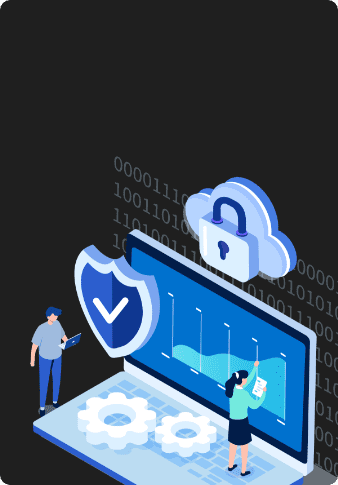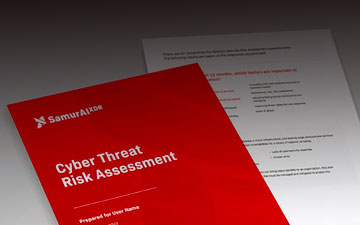Implementing robust cybersecurity is a complex undertaking that requires a mix of effective human and technical components. The individuals responsible for securing an IT environment must have the necessary knowledge and effective tools to guard against increasingly sophisticated threat actors.
Factors that Contribute to Cybersecurity Complexity
Many factors contribute to the complexity involved with securing an organization’s IT environment. Companies need to effectively address these factors to ensure the security of their business-critical systems and valuable data resources.
- The sophisticated and constantly evolving nature of threats makes it impossible to rely on static cybersecurity solutions. Advanced persistent threats (APTs) are an example of threat actors employing subtle intrusion techniques to attack a computing environment. Polymorphic malware can change its identifiable characteristics as it moves through an IT environment. Protecting against these types of threats dramatically increases cybersecurity complexity.
- The expense of cybersecurity solutions and their requisite support teams that have the capability to defend against advanced threats are beyond the budgets of many organizations.
- IT environments are continually getting more complex as companies leverage multiple options to address unique business objectives. As organizations deploy complex public cloud, hybrid, and multi-cloud environments they become more difficult and complicated to protect than traditional, on-premises infrastructure.
- The expanding and changing attack surface adds significant complexity to the task of securing IT resources. Protecting the environment was much simpler when all personnel and components were on-premises behind an enterprise firewall. Digital transformation has resulted in many businesses moving systems and applications to the cloud. Remote workers and edge computing are other trends contributing to the rising complexity of IT environments.
- Coordinating cybersecurity tasks with other roles can introduce complexity. Small businesses without dedicated cybersecurity teams can find it extremely challenging to integrate security responsibilities with a limited staff.
- Many diverse cybersecurity solutions need to work together to provide adequate protection. This often results in additional complexity as personnel have to look for alerts across multiple interfaces.
- Complicated cybersecurity software solutions may require extensive configuration to provide any value to the customer. Not all organizations have the technical resources necessary to configure and implement cybersecurity tools.
Strategies to Reduce Cybersecurity Complexity
Organizations may need to adopt new strategies or tactics to reduce the cybersecurity complexity necessary to protect their environments. Budgetary constraints and the availability of technical resources are always factors when developing a cybersecurity strategy and may preclude an extensive investment. Replacing existing point tools with an integrated solution can be expensive and risks vendor lock-in.
The following strategies can help organizations reduce cybersecurity complexity.
- Consolidate cybersecurity software platforms to reduce the demands put on the members of the IT team responsible for security. Minimizing the interfaces that need to be monitored reduces complexity and enhances productivity.
- Companies should look for solutions that are easy to use by everyone on the IT staff, not just dedicated cybersecurity experts. This is especially important for SMBs with limited technical resources to expend on security.
- Businesses should deploy cybersecurity solutions that are simple to implement, require minimal configuration, and provide fast results. Software-as-a-Service (SaaS) solutions often display these characteristics and should be strongly considered as a method of reducing cybersecurity complexity.
- Automated tools should be adopted that can prioritize threats and give better direction to staff members responsible for cybersecurity. Intelligent automation can reduce the complexity of handling excessive alerts so serious risks can be investigated.
How Samurai XDR Streamlines Cybersecurity
Samurai XDR directly addresses and reduces many of the factors that contribute to cybersecurity complexity. The platform enables companies to integrate existing, standalone security tools simply and efficiently. Samurai XDR lets you get up and running quickly to provide your environment with advanced threat detection and response capabilities.
The following characteristics of Samurai XDR help organizations of all sizes implement robust cybersecurity.
- The cloud-native architecture of Samurai XDR results in easy implementation and allows security personnel to get up and running quickly to provide value to the organization. No complex configuration is required to deploy this threat detection solution to protect your IT environment.
- Samurai is an integrated security solution that eliminates the complexity associated with integrating and maintaining multiple components of a security stack. This feature eliminates the time and effort required to implement and maintain the integrations between diverse systems necessary to protect complex infrastructure.
- The XDR platform provides threat detection informed by NTT’s T1 internet backbone to quickly identify threat activity. The threat intelligence furnished from this backbone enables emerging threats to be identified in real time so they can be addressed before causing damage to the environment.
- Samurai’s cloud-based SaaS architecture is designed to scale and provide the flexibility you need to address evolving business requirements and objectives. The platform integrates with your existing cybersecurity stack and future-proofs you against emerging threats. Our solution eliminates the need to consider capacity management to protect a growing infrastructure.
- Automated threat prioritization eliminates the complexity of deciding which issues need to be addressed promptly. The tool also reduces false positive alerts that add complexity to providing security and can result in alert overload for the individuals responsible for security.
- A single interface eliminates swivel-chair management and lets a single individual monitor threats to the environment effectively. Consolidating threat information in this way reduces complexity and the potential human error introduced when having to monitor multiple screens.
- Samurai XDR is an accessible security tool that is ideal for smaller organizations. The solution can be used by everyone on the IT staff without requiring a dedicated SecOps team. The threat detection capabilities offered to companies of any size by Samurai XDR were previously only available to organizations with extensive IT budgets.
- Our intelligent platform brings the power of advanced behavioral analytics and machine learning to provide visibility into the entire digital environment. It levels the playing field by enabling organizations of any size to access cutting-edge threat detection capabilities.
Samurai is available in the cloud for a small monthly fee with no extended contracts involved. Customers can contact the threat detection experts at Samurai or request a free trial of Samurai XDR to see the tool in action and learn how it offers a simple method of implementing a robust cybersecurity strategy.
Featured articles
How Samurai XDR’s Threat Intelligence Protects Your Business
4 October 2023 | XDR
Attacks on IT environments are becoming increasingly sophisticated and harder to detect using traditional methodology. It is no longer enough...
How XDR Reduces Your Cybersecurity Workload
28 September 2023 | XDR
The security of a company’s IT environment is critical for its ability to effectively perform business operations. Mishandling sensitive information...
How XDR Simplifies Implementing Robust Cybersecurity
20 September 2023 | XDR
Implementing robust cybersecurity is a complex undertaking. The individuals responsible for securing an IT environment must have the knowledge and...


